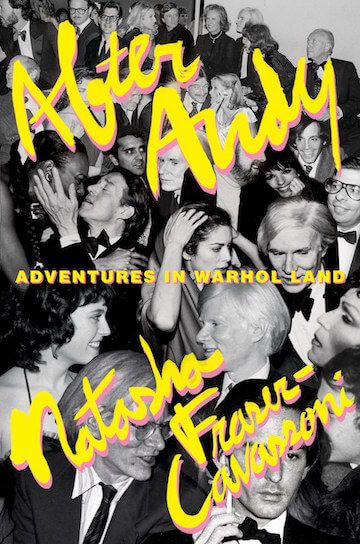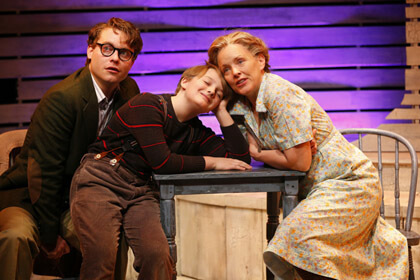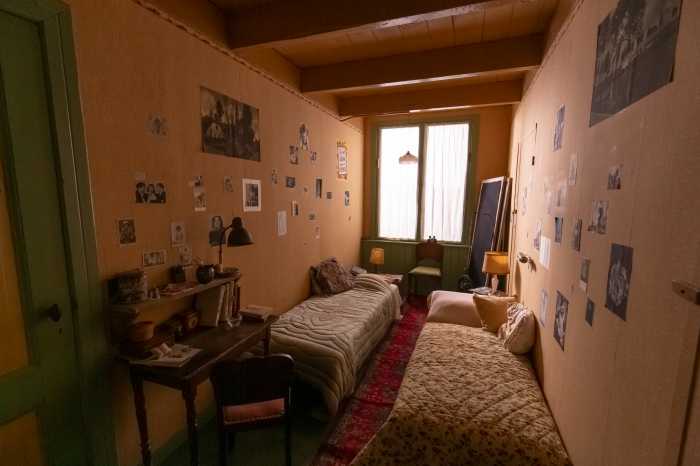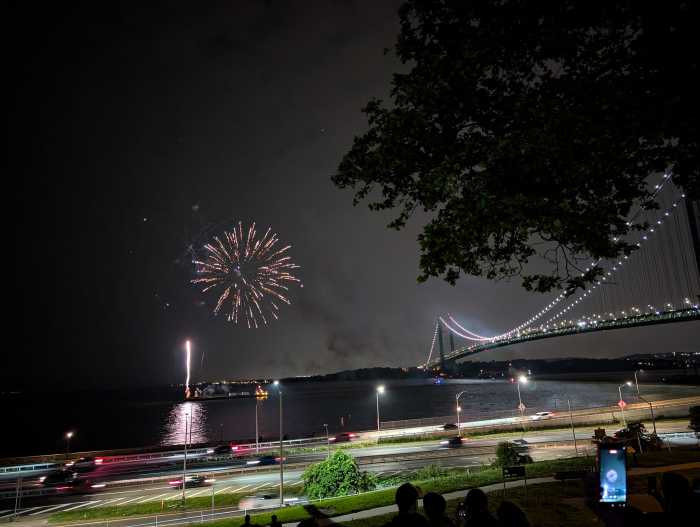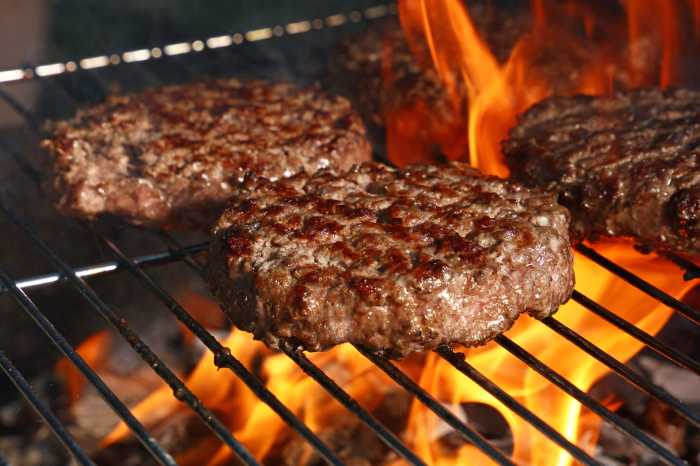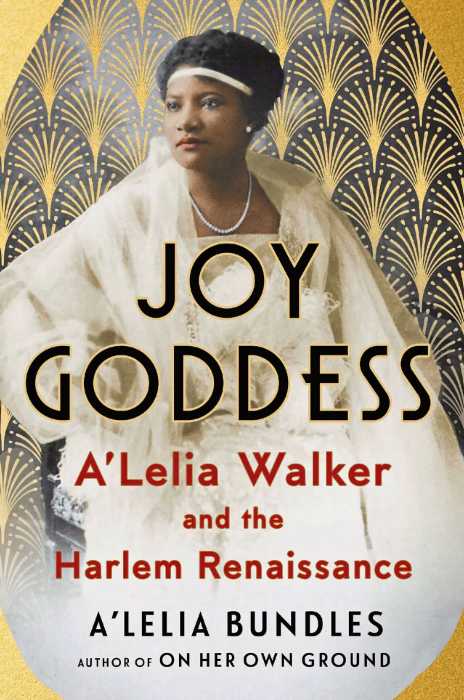 BY DOUG IRELAND | If one asks male queers today who wrote the first serious modern American novel that was explicitly gay, nine out of 10 would answer Gore Vidal, for his 1948 book “The City and the Pillar.” But they’d be wrong.
BY DOUG IRELAND | If one asks male queers today who wrote the first serious modern American novel that was explicitly gay, nine out of 10 would answer Gore Vidal, for his 1948 book “The City and the Pillar.” But they’d be wrong.
That distinction belongs to John Horne Burns, whose 1947 “The Gallery,” based on his wartime service in North Africa and Italy, garnered almost universal rave reviews, becoming a bestseller that immediately went through 12 printings. The novel nearly won the Pulitzer Prize for its hitherto unknown 31-year-old author, who became a literary celebrity overnight.
Burns’ portrait was featured on the cover of the influential Saturday Review of Literature as “the best war novelist of 1947,” and he was the first author to be praised simultaneously by Harper’s magazine and Harper’s Bazaar, the latter running a “romantic photograph of Burns taken on a gritty New York street” when it listed him as one of 1947’s “Men of the Moment” — along with David Lean, Robert Ryan, Michael Redgrave, and Stephen Spender.
John Horne Burns, America’s “best war novelist,” done in by homophobia and his own success
When Life magazine did a feature that year on the new generation of novelists to come out of World War II and assembled a half dozen of them for a group photograph, Burns was given pride of place at the front, with writers now better remembered than he in the background. Gore Vidal, whose World War II novel ”Williwaw” — a critically acclaimed little jewel about his war service in the Aleutians written when he was only 19 — was published the year before, but he was not included in the Life group of war writers.
Yet today, Burns is almost forgotten, even by cultivated gay writers. The talented Christopher Bram (author of the novel “The Father of Frankenstein,” which became the Oscar-winning gay cult film “Gods and Monsters”), in his otherwise useful book “Eminent Outlaws: The Gay Writers Who Changed America,” published in 2012, accords Burns and “The Gallery” only a dismissive half-sentence.
That’s a great pity because “The Gallery is, in so many ways, a much better book than the iconic “The City and the Pillar” — and Vidal knew it. This is one of the many revealing elements of an admirable new biography, “Dreadful: The Short Life and Gay Times of John Horne Burns” by David Margolick, just published by The Other Press.
As Margolick writes, Burns “had several encounters with Gore Vidal, leading to a highly charged rivalry that seemed to fascinate, and haunt, Vidal (who was nine years younger than Burns) for decades afterward. The two competed over everything, including which of them was more competitive.”
Vidal recorded at some length in his diary their first meeting, at a largely queer cocktail party in New York thrown by a mutual friend. “There was mild antagonism in the air,” Vidal wrote of the encounter, adding: “He is very odd, quite ugly [Vidal vastly overstates this—others found Burns “handsome”]; tall plump and fair a long broken nose, flop ears and a high forehead… His speaking voice is pleasant — he talks jerkily to cover an obvious lack of ease — he says unpleasant things about writers, especially Truman [Capote]… His smile is charming.”
Vidal and Burns met again a few days later at a party given by Beulah Hagen, a close friend of Burns who was the sister-in-law of the actress Uta Hagen and also the sister of the gay novelist and essayist Glenway Wescott, who’d invited Vidal. “It was a gloomy affair,” Vidal wrote later: “‘The City and the Pillar’ was just out and everyone was attacking it. Burns was riding high on ‘The Gallery’ and he tended to be rather patronizing, saying polite things about ‘Williwaw.’ All I can remember is Janet Flanner [the celebrated New Yorker writer and a notorious lesbian] taking him aside to tell him in her gruff voice that he had written one of the finest, etc., etc. No one, alas, praised me. I grew irritable. Glenway praised and praised. Burns pouted and mumbled alternately, offending, I was told later, everyone.” Margolick writes that “Beulah Hagen later recalled Vidal leaving that night in a huff.”
Yet when, again only a few days later, Vidal finally read “The Gallery” as he was preparing to depart for Italy, he recorded that “I was much moved.” A few years later Vidal wrote that Burns “has extraordinary intuition and brains,” and said “The Gallery” displayed “a compassion which has been unequaled by his dry, careful contemporaries who commit as little as possible both emotionally and artistically.”
That Burns’ and Capote’s first books were such successes “reacts on me like a thunderstorm on a barometer,” Vidal confided in his 1949 journal: “There are passages in Truman that make me writhe they are so good… and the dignity of ‘The Gallery’ is like a blow… If they were unsuccessful I suppose I could survive their excellence but the fact that there are people who put one or the other or both ahead of me is too much.”
Margolick writes, “Long after Burns had ceased to matter to just about everyone, Vidal continued talking about him, regaling guests in late-evening discussions at his home above the Mediterranean with gossip about his life and death.” And in a long essay for the New York Times Book Review in 1965, Vidal wrote, “Of the well-known books of the war, I have always thought only Burns’ was authentic. To me the others were redolent of ambition and literature, and their talented authors have since gone on to better things. But for Burns the war was genuine revelation. In Naples he fell in love with the idea of life.”
And the very first thing Vidal did on arriving in Italy was to take himself off to Naples to search out the Galleria Umberto I, the mammoth glass-enclosed shopping arcade whose bombed-out shell was the locus of the cruising and the gay bar Burns’ described in “The Gallery.” Vidal, of course, aimed to procure himself one of the Italian boys available there for a dalliance.
Vidal was just one of many writers who admired “The Gallery” intensely. William Styron was “inspired “ by it, calling it “beautifully crafted.” Ernest Hemingway, who had not yet won the Nobel Prize for literature, wrote to a friend in 1947, “Read some damned good books. Latest: ‘The Gallery’ — wonderfully written,” and later urged the prestigious Italian publisher Mondadori to include the book in a series it would sponsor and Hemingway curate. Hemingway’s ex-wife, the war correspondent Martha Gellhorn, sent her accolades directly to Burns, telling him that “you write like an angel and so beautifully, and the book is a triumph and I thank you!” Edmund Wilson, the country’s most respected literary critic, was struck by Burns’ promise, writing in the New Yorker of his “unmistakable talent,” noting of “The Gallery” that “even the worst of these pages are the bad writing of a man who can write.” Wilson added, “Mr. John Horne Burns, when he has worked at his craft longer, will give us something both solider and more intense than this already remarkable book.”
With ecstatic praise like this — especially for a first novel — flowing his way from all corners, Burns thought he was “a lock” to win the 1948 Pulitzer Prize — which went instead to James Michener for “Tales of the South Pacific” (later turned into the famous Rodgers and Hammerstein Broadway musical and film), but Michener thought Burns was a much better writer who’d been “robbed” of his Pulitzer. He predicted Burns “would one day attain the stature of E.M. Forster.”
Burns was “savagely disappointed” that Michener had won “his” Pulitzer and nursed a “burning hatred” for him, Margolick writes. At that famous Life photo session with the young war writers, Burns refused to shake Michener’s hand. Michener recalled in his memoirs that outside after the photo shoot, he was “standing on the sidewalk with a Life editor when the topic turned to Burns. ‘He’s quite a faggot, you know,’ the editor remarked. When we turned Burns was standing less than a foot behind us, his face an ashen gray.”
The critical success of “The Gallery” was possible only because, as Margolick writes, “its gayness was almost entirely overlooked or, perhaps more accurately, ignored… Discomfited or uninterested or oblivious or downright hostile, most straight reviewers either missed the topic or pretended it wasn’t there. It was a familiar trope, one that affected gay writers like Walt Whitman and Oscar Wilde as well: the homosexual dimension of that work simply went unrecognized. (As the cultural historian Michael Henry Adams has noted, ‘being ignored is one of the bitterest forms of bigotry.’)
“So ‘The Gallery’ was just another war novel, and Burns just another war novelist. Oddly enough, this conspiracy of silence insulated Burns from the hostility that greeted Gore Vidal’s ‘The City and the Pillar’ the following year.”
But rampant homophobia was the critical response to Burns’ second novel, “Lucifer With a Book,” about a semi-prestigious private school based on Harvard graduate Burns’ experience as a teacher at the Loomis School in Windsor, Connecticut, a semi-prestigious private academy about which “Lucifer” is an ill-disguised roman à clef. Typical of this anti-gay prejudice was the Herald-Tribune Sunday Book Review, which denounced “Lucifer” as “the weirdest collection of freaks to have been brought together since Barnum.” The Chicago Tribune denounced its portraits of the students, who “range from blond, brainless, monied mastiffs popping bubble gum and winning the all-important football games to lushly effeminate numbers who make your skin crawl. In between there are a few misfits who came to The Academy to learn. They are, of course, Queers.”
Despite Burns’ vocal left-wing politics, even the Communist paper the Daily Worker tarred “Lucifer” with a lavender brush, Robert Friedman writing. “Chapter after chapter, in monotonous exaggeration, is devoted to the sexual irregularities, abnormalities, and perversions to which seemingly practically everybody at The Academy is addicted.”
Vidal later said that homophobia “destroyed Burns as a novelist” and called “Lucifer” “the most savagely and unjustly attacked book of its day,” an assessment with which even Michener — to whose work Burns had given an absolutely savage review — agreed.
Burns had become addicted to alcohol while a student at Harvard — he thought it aided his thought and creative processes — but the booze that fueled him throughout the writing of both “The Gallery” and “Lucifer With a Book” was already beginning to take its toll when the critical failure and homophobia that greeted his second novel drove him to self-exile in Italy, where the best (and gayest) sections of “The Gallery” are set.
If Burns comes alive in this biography, it is due not just to the enjoyable prose of Margolick — a contributing editor of Vanity Fair — but to the use he makes of Burns’ voluminous, lively, vivid, and evocative correspondence. Burns was a difficult, prickly, and often imperious man to know, and he “wrote so many letters to so many people not because he had so many intimates, but because he didn’t,” Margolick writes. “He liked his own prose: in most cases, the recipients were almost secondary.”
Burns’ gayest letters were written to a former student of his at Loomis, nine years his junior, David MacMackin, “eccentric, musical, precocious, and effeminate.” Margolick writes that “it is unclear whether they were ever sexually involved.” But the title of the biography, “Dreadful,” comes from Burns’ use of that word as camp code for homosexual as both noun and adjective in his correspondence with MacMackin, one of their many inside jokes — and one that allowed his letters to the youth from abroad to broach queer matters without alerting the army’s wartime censors. (Burns probably picked up “dreadful” as a signifier for “queer” from a Shelley poem mentioning “deeds too dreadful to name.”)
At his training camp, Burns wrote MacMackin, he encountered “a raft of dreadfuls” — most higher-ranking officers than he — beginning when he was “propositioned by an elegant slender Catholic sergeant” in the chaplain’s office. He wrote that the Seventh Medical Corps was “riotous & dreadful.” And that “‘twenty New York dreadfuls,’ calling themselves the ‘Mad Queens,’ and wearing their field jackets like ‘mink boleros’ had just entered the 32nd Battalion.” He also reported that “all the chaplain’s groups from corporals up wriggle their bums when they walk and use high-heeled talk.”
The extensive gay underside of army life, so finely chronicled by Allan Bérubé in his must-read 1990 World War II history “Coming Out Under Fire,” leaps out in Burns’ letters to his former pupil. In fact, Burns became something of a guru to the coteries of other “dreadfuls” he encountered in uniform; they looked up to him for his self-assurance and self-acceptance.
But Burns could also be quite lucid about himself, as a letter to his mother demonstrates. Though his homosexuality was never discussed in his very conservative Irish Catholic family, the letter is worth quoting at length because it gives us the flavor of the man in his own words:
“Nothing and no one really satisfies me except myself and ideas — music, poetry, intangibles. I am a sensation-seeker of a fairly high order, and when there are no more sensations I’ll probably die in a genteel but none the less jaded manner. By this token I can’t help hurting people, of whom I always tire before they tire of me. They delude themselves into thinking that in me they’ve found some key, some secret, some be-all and end-all. Sooner or later I find they’re boring me or sucking me dry, and I have to make a clean break with them. It’s impossible for me to have, like most soldiers, a ‘buddy,’ for my arc is too wide and too eccentric to admit of another’s presence. This summation of my perversities, reduced ad absurdum, makes me a great genius, a fool, a misanthrope, an ascetic. Probably I’m some of all; there’s a coldness and a cruelty and a logic in my reasoning that rather terrifies me… I’ve hardly ever failed to size up a character at once, on intuition, and later experience proves me to be right. I have moments of profound depression, my nerves are so sharp that I can reduce everything and everyone to a shamblesy zero. Then when I’m convinced I’m a cool ghoul, I have a moment of icy calm, like death, and the most exquisite fire and laughter glows in me, so that there seems to be between me and God a secret shared by very few.”
Burns was a celebrity in Italy, where “The Gallery” was a bestseller and critically acclaimed for its sensitivity to the Italians and their mores (in contrast to John Hersey’s soupy and treacley wartime Italian novel “A Bell for Adono,” which they considered patronizing”). In Florence he was known to all as “Il Autore” (the Author). But although he formed a serious relationship with a small-town veterinarian, Sandro Nencini, a handsome man six years Burns’ junior, this happiness was bad for his work. His third novel, “A Cry of Children,” was a mess, and it, too, was greeted in the US with homophobic contempt. Typical was a Chicago Tribune review, which slammed Burns saying he had “not yet raised his sights above the slime of neuroticism, homosexuality, and assorted perversions… the reader is forced to consort with a wide range of sluts, lesbians, homosexuals, and incipient sadists.”
His body already weakened by the series of sexually transmitted diseases — gonorrhea and syphilis —contracted during his serial trysts in wartime Italy, Burns spent his final years as a lonely fixture at the bar of the Hotel Excelsior in Florence, subsisting on brandy and candy and speaking to no one other than the barman, except to get into the occasional drunken argument.
“In those years,” Vidal later wrote, “one tried not to think too much of Burns. He was the best of us all, and he went out in the worst way.”
On a trip to the seaside with Nencini, Burns, as usual. drank too much, and, though ever oversensitive to sunlight, stayed out in the sun too long. He became ill and died within days, apparently of some sort of cerebral hemorrhage aggravated by sunstroke and booze.
Why did Burns fall so far so fast, and die so soon at only 36? Vidal came as close as anyone to plumbing these two riddles: “Burns was a gifted man who wrote a book far in excess of his gift, making a kind of masterpiece which will endure in a way that he could not. Extreme circumstances made him write a book which was better than his talent, an unbearable fate for an ambitious artist who wants to go on, but cannot; all later work shadowed by the splendid accident of a moment’s genius. I suspect that once Burns realized his situation, he in fact chose not to go on, and between Italian brandy and Italian sun contrived to stop.”
I recently re-read “The Gallery” after some years away from it, and was again struck by how vital, fresh, and modern it is, and how realistically it portrays homosexuality as normal. It remains an important book, and an essential link and landmark in the still-unfolding history of queer culture. I agree with David Mamet’s assessment that “The Gallery” was “the best book to have come out of the war.”
And though Margolick admits that, when he came to write this biography, the gay world was “a black hole for me” and “for a straight man, unfamiliar, even treacherous,” he restores Burns to us without condescension and with enormous sensitivity and sympathy. “Dreadful: The Short Life and Gay Times of John Horne Burns” is a fine piece of work that I heartily recommend without the slightest reservation.
DREADFUL: THE SHORT LIFE AND GAY TIMES OF JOHN HORNE BURNS | By David Margolick | The Other Press | $28.95 | 379 pages


